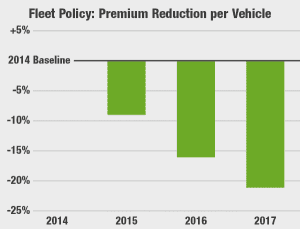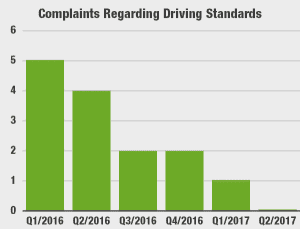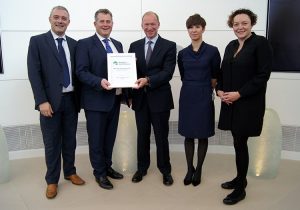 Champion: McLaren Automotive
Business Sector: Vehicle design, development and manufacture
Business Benefits: Since starting the process of improvement, McLaren has seen solid reductions in insurance claims. The direct financial benefit of this reduction in claims is that the cost of fleet insurance policy has steadily reduced by a total of almost 21% per vehicle per year since 2014, with further reductions likely if the current trend in claims reduction continues.
Champion: McLaren Automotive
Business Sector: Vehicle design, development and manufacture
Business Benefits: Since starting the process of improvement, McLaren has seen solid reductions in insurance claims. The direct financial benefit of this reduction in claims is that the cost of fleet insurance policy has steadily reduced by a total of almost 21% per vehicle per year since 2014, with further reductions likely if the current trend in claims reduction continues.Statement from Mike Flewitt
Chief Executive, McLaren Automotive
People are at the heart of McLaren Automotive Limited; it is the passion and dedication of our people that has enabled us to achieve the extraordinary success we experience as a business and as a brand.The health, safety and welfare of our people is fundamental to our continued success and this brings us to acknowledge that driving for work is a high risk activity that we need to manage.
I have a vision of excellence in driving standards that reflects us a brand. Be it in the neatness that we park, the respectful manner in which we drive through a city centre, the clinical structure as we drive in convoy, the way we demonstrate the full performance of our vehicles on track; all driving should be done in a McLaren way, to a standard of excellence admired by onlookers.
Our Driver Safety Policy is realistic and in alignment with McLaren values and ways of working. It sets out our expectations in the driving standards and choices our people make relating to driving that will help us keep them safe and project an image of perfection to all those who observe us.
I am extremely proud that the Driving for Better Business campaign has recognised the work we have done to ensure these high standards, and of the improvements we have achieved. It reflects well on all those within McLaren who drive as part of their role, or are involved in the management of our drivers and vehicles.
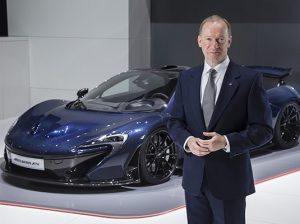
©McLaren Automotive
Summary of at-work driving activities
McLaren Automotive Limited has to manage a complex mix of at-work driving activities including:
- Grey fleet and hire vehicles – employees visiting customers, suppliers, dealers and partners, as well as participating in various events, nationally and overseas.
- On-road and on-track development of pre-production models
- On-road pre-delivery routines for customer cars
- On-road use connected with after-sales and servicing
- On-track events and motorsport for customers
Due to the high-performance nature of the vehicles, and high recognition of the brand, any failures in these areas have the potential to be extremely dangerous and costly, with the outcomes magnified, causing serious reputational damage to the brand.
It is therefore vital that the highest standards are maintained, and that the levels of operational business excellence for which McLaren is renowned, are also applied to our at-work driving activities.

Challenges
In 2014, the business was growing rapidly, as was the amount of miles driven on business. The result was that insurance claims were also rising against both their trade policy (McLaren product) and their fleet policy (company cars).
Calls from the public about what they perceived to be a poor standard of driving were also at a level that didn’t fit with McLaren’s ethos of excellence and striving for perfection in all areas of the business, leading to reputational damage. Speeding tickets and damage to cars were more frequent than they should be, resulting in increased risk to drivers and unnecessary expenditure for the business.
In order to improve the way McLaren managed its cars and drivers, they brought in Hannah Gregory, a fleet risk management specialist, to assess the current issues and then look at options for addressing them.
Hannah Gregory
Driving & Road Safety Manager
McLaren Automotive Ltd
One of our biggest challenges was understanding the full range of driving activities that our people undertake, what risks were present and what the practical control measures might be.
We decided to run a series of workshops where all our driving staff could provide input into the development of our Driver Safety Policy. Central to our approach is ensuring that all our people managers fully understand their responsibilities and are equipped to identify potential risks, particularly concerning work pressures.
The result was a feeling of genuine ownership, and a policy that all of our people have accepted and strive to adhere to.
Another challenge was being able to see exactly where the costs were. As the company had grown, the level of incidents and related costs wasn’t being picked up clearly in the fleet reporting beyond the obvious insurance claims. Improving how we measure and monitor all our ‘at-work’ driving has enabled us to quickly spot areas for improvement, act accordingly, and quickly see that translate into improvement.
The success of the entire McLaren business, both race and road cars, has been built on the mantra of ‘test, measure and improve’. The cars, and the process of building them, are broken down into the smallest constituent parts and constantly tested, measured, assessed and improved. Small improvements in a number of areas can result in huge improvements overall. This approach has brought us success on the race track and global acclaim for the quality and performance of our road cars. The way we manage our fleet should be no different.

Managing our drivers and vehicles: Driver Safety Policy
At McLaren we live by our values. When driving, that means:
- We take the safety of our people personally;
- We work together to understand the challenges of driving for work;
- We make things happen to make our roles safer;
- We enjoy being part of a great driving team;
- We will exceed expectations by setting a McLaren standard of excellence in driving safety
The value ‘we work together’ has been the foundation of our Driver Safety Policy. Our approach has been to integrate with all our business areas, searching out the less obvious stakeholders and influencers within the workforce to understand how the business really works at all levels.
We hunt out and monitor the causes of stress and pressure that could encourage risk taking attitudes. We source our solutions and formulate our policies and procedures from within the teams that use them every day. This not only creates ownership, it helps to keep things streamlined and efficient as well as fuelling their appetite to come forward with risks they see in the future.
To bring these sentiments to life, we ran a series of workshops with people from all areas of the business that involve driving for work. The workshops discussed the different types of driving activity undertaken, the risks involved and realistic solutions for minimising those risks. Rather than being dictated from above, the Driver Safety Policy was formulated from these discussions.
Communicating our Driver Safety Policy has called on our value ‘we take it personally’. The policy was launched on our intranet for people to read and drop-in sessions were set up to allow people to come and ask questions, and equally identify challenges that we may not have spotted.
We are now coaching our people managers to help them to fully understand their responsibilities and be equipped to identify potential risks, particularly concerning work pressures. They are tasked with our values ‘we make things happen’ and ‘we enjoy what we do’; which fits so well with creating the right environment and celebrating the many successes of improved safety culture within teams and the wider business.
The result is that our Driver Safety Policies, and associated procedures, have been fully accepted by our people, because they have a sense of ownership over them, and we are already starting to see tangible business benefits from this approach.
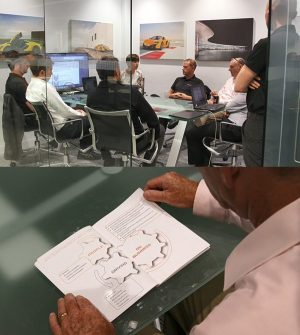
Managing our drivers and vehicles: Driver Assessment
To support the Driver Safety Policy, all our people who drive on business, whether in their own car, a hire car, or a McLaren vehicle, must first undergo an individual driver assessment in order to obtain a McLaren Driving Permit. Grey fleet and hire car drivers complete online driver assessments, while employees required to drive McLaren cars must undergo a full on-road assessment. The on-road assessments look at the driver’s general disposition behind the wheel as well as vehicle handling skills and also focuses on the drivers reaction to pressure, stressful driving scenarios, hazards and their driving environment.
The assessments are carried out by fully qualified driver coaches. The McLaren Driver Permit has 6 grades with E, D and C relating to driving private, hire or pool vehicles or McLaren vehicles on public roads.
B, A and PRO grades relate to the very highly skilled track activities involving vehicle development and events with journalists and customers.
If a driver fails one of these assessments (and some have) for whatever reason, they are not permitted to drive for work on behalf of McLaren Automotive unless they are given the opportunity to undertake coaching, retake the assessment and subsequently pass to the required level.
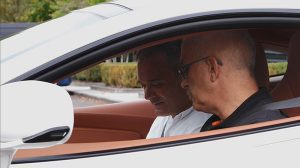
Business benefits: collision reduction and financial savings
Since starting the process of improvement, McLaren has seen solid reductions in insurance claims. Our ‘trade’ policy covers the use of McLaren’s own cars on public roads, testing both development cars and customer cars in for repairs or maintenance.
Collisions involving our own cars present a number of unique risks. The high-performance of our cars opens up the possibility of very serious incidents, with a high risk to the safety of occupants and other road users, the costs of such incidents are substantial, as is the risk of reputational damage due to the ‘newsworthyness’ of such incidents. Over the past three years McLaren has almost completely eradicated this type of incident.
Our ‘fleet’ policy covers the company car fleet which includes many typical executive and business-spec vehicles from other manufacturers. These cars are used travelling to events and for meetings with dealers, customers and suppliers. Claims against the fleet policy have reduced by over 50% in the last three years.
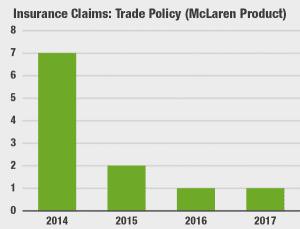
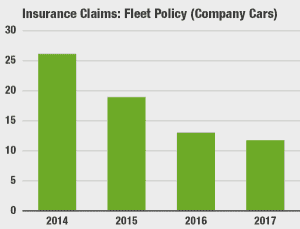
As this is the result of improved understanding and safer driving, complaints from the public about the standard of driving have also been almost completely eradicated since they started to be logged at the beginning of 2016.
